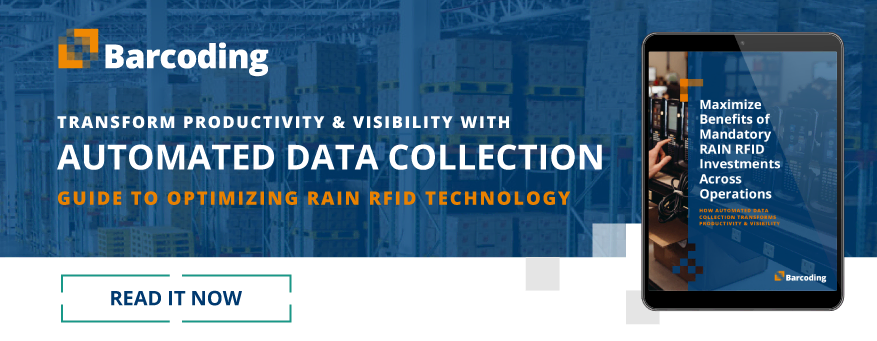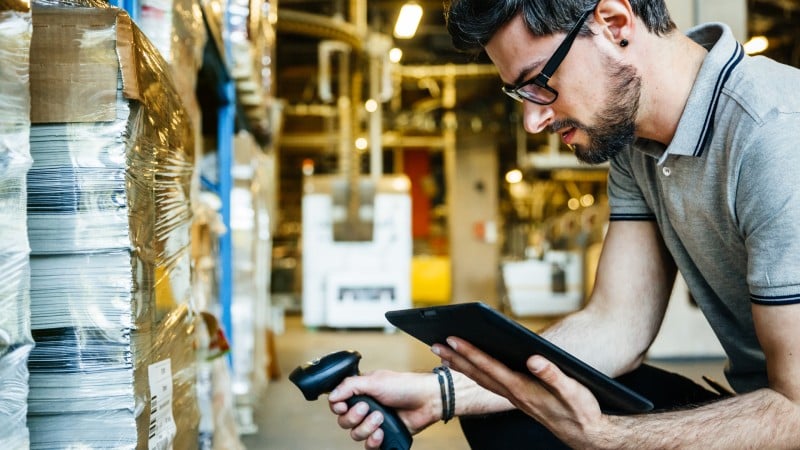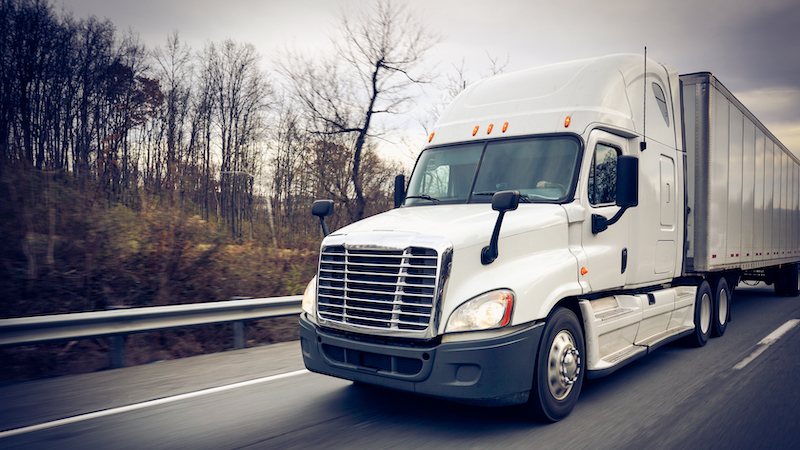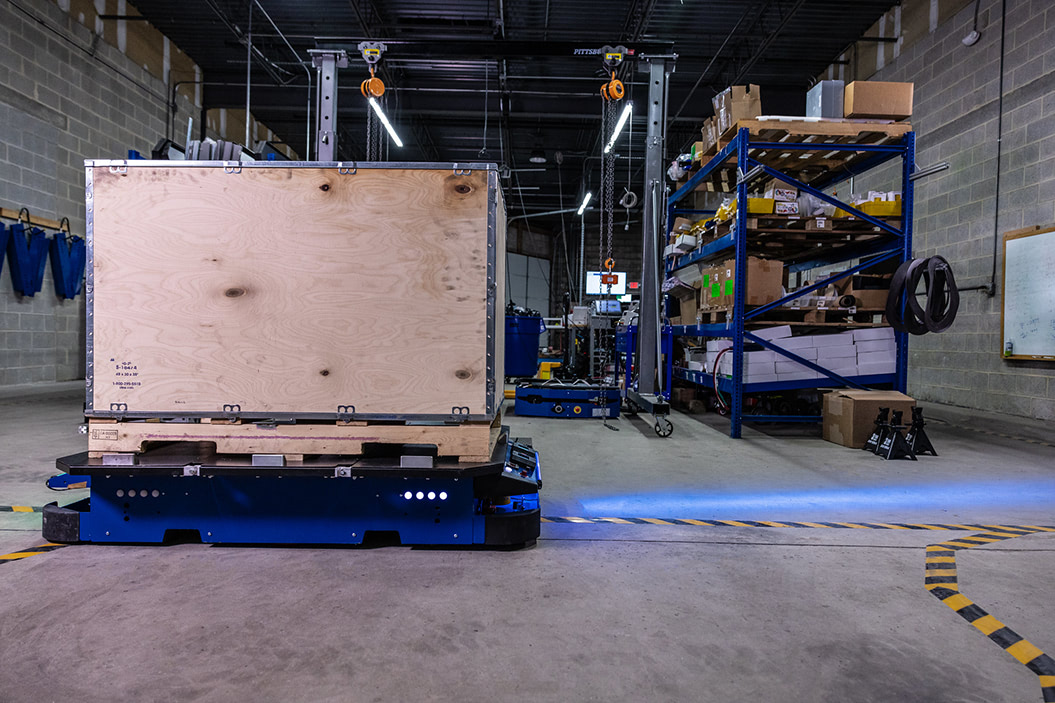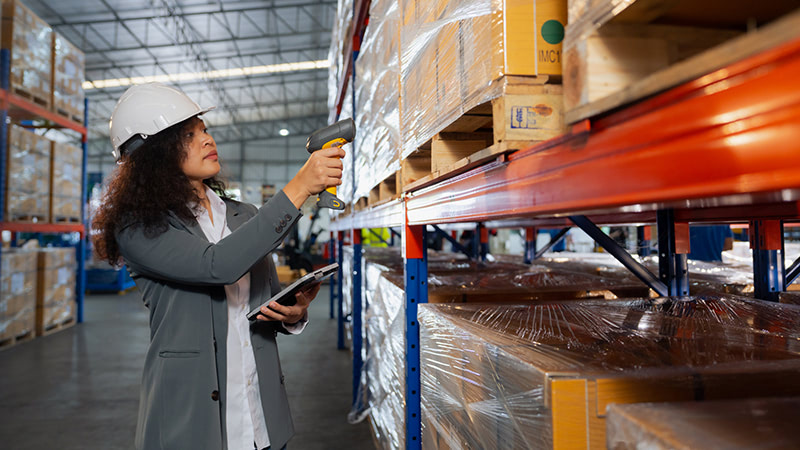Manufacturers face pressure to meet rising consumer demand while contending with labour shortages, worker skills gaps, and complex supply chains. That’s a lot to manage, and successful manufacturing companies are finding ways to:
- Do more with less
- Focus capabilities where they add value
- Capture high quality data to drive operational decisions
Fortunately, some of the most commonly adopted warehouse automation systems can deliver these and other capabilities to manufacturers. Many smart manufacturers are looking to automation to optimise workflows, reduce costs, and improve workplace safety and job satisfaction.
Now, more manufacturers are putting automated guided vehicles (AGVs) and autonomous mobile robots (AMRs) to work on the production floor.
What are AGVs and AMRs?
An AGV is a driverless vehicle that follows a predefined route. It can typically do just one thing, like tug or carry loads, or help perform other repetitive, predictable tasks. An AGV’s safe navigation relies on aids like magnetic tape or specialised sensors placed throughout its environment.
AGVs are best suited for repetitive material transport tasks that contribute motion waste, like moving raw materials, work-in-progress, or finished goods between fixed locations.
RELATED: Top 10 AGV Myths Debunked: Get the Facts on Automated Guided Vehicles
In contrast to AGVs, an AMR navigates through a facility without following a fixed path, using sophisticated programming, mapping, and collision-avoidance technologies. While an AGV can operate without WiFi connectivity, most AMRs rely on cloud-based systems to varying extents.
Using network-connected mapping systems combined with multiple onboard sensors and AI prediction capabilities, AMRs can dynamically map their environment and plot optimal routes between destinations. They’re adaptable and redeployable, should needs change.
RELATED: Improving Warehouse Operations with Autonomous Mobile Robots
Use Cases for AGVs and AMRs in Manufacturing
Just as they do in warehousing, AGVs and AMRs excel at handling mundane, menial, and sometimes even risky material transport activities in manufacturing operations. That frees employees for more value-added tasks and helps protect workers from the risks of lifting incorrectly or the repetitive stress of manually lifting and carrying heavy materials over long distances within facilities.
AGVs can shuttle parts, subassemblies, tools, consumable supplies, dunnage, and other materials and objects between workstations, storage locations, and shipping areas along predetermined paths.
AMRs can provide on-demand parts, tools, and supplies delivery to production lines, optimising material flows. Solutions with intelligent dispatching and route planning capabilities can dynamically reprioritise tasks to keep production lines replenished without overstocking workstations.
For buildings with multiple discrete production process areas, AGVs and AMRs can both enable efficient intra-facility transportation.
How to Introduce Automated Material Moving
The transformation doesn’t have to happen all at once. Adding automation to address material handling in manufacturing facilities can follow a phased approach. A modular implementation approach can enable teams in IT and operations to prove value task by task, while using change management communications to empower the workers who’ll collaborate with the robots every day.
Implementing even limited AGV and AMR capabilities for targeted material handling tasks can provide significant benefits to employees, operations, and the bottom line:
- Frees workers from non-value-added manual material transport to improve productivity and employee experience
- Supports worker health and improves safety by reducing risk for musculoskeletal injuries associated with pushing heavy carts and repetitive lifting, while reducing risk of forklift-related accidents
- Helps address a persistent labour shortage by enabling smaller shifts to achieve greater output by multiplying individual productivity
- Takes away some of the tedium and physical demand of material handling tasks, for better employee satisfaction, engagement, and retention
- Helps support reliable 24/7 operations by reducing dependence on fixed employee shift schedules for material handling needs
- Provides opportunities for detailed data tracking and analytics around material flows to inform decision-making with reliable, up-to-date information
Where’s the best place to start? Our experts can help you make that determination based on your people and processes, but some of the most typical uses in a manufacturing facility are easy to envision.
10 Manufacturing Use Cases for AMRs and/or AGVs
It’s important to understand that AGVs and AMRs aren’t simply interchangeable. With any job, there’s usually a “right tool,” meaning one can be a more optimal fit than the other. Here are some common use cases along with the automation that’s most often used to meet the need.
1. Automate In-Plant Transportation
AGVs excel at shuttling parts, tools, materials and supplies between workstations along fixed paths. In large, expansive plants, tasks like these are prime targets for automation.
2. Move Dunnage Without Wasting People’s Time
Dunnage movement may represent the very essence of waste in a manufacturing environment: movement waste, waste of talent, and…just waste. Automating handling of dunnage is a no-brainer.
3. Replenish Parts On Demand
Because AMRs operate dynamically, they can deliver components directly to production lines as needed, preventing shortages and overstocking at workstations.
4. Mitigate Injury Risk
Heavy loads or objects, unwieldy items or packages, and long walks carrying objects can all contribute to injury risk. Demonstrating risk reduction is just smart business.
5. Streamline Intra-Building Transfers
Both AMRs and AGVs enable efficient transfers between separate production lines, even in expansive facilities, without direct task handling by workers.
6. Increase Productivity
Whether it’s an AMR’s task or an AGV’s, automating non-value-added logistics jobs frees workers to focus on skilled tasks. That adds value and helps facilities achieve KPI targets.
7. Maintain Higher Output Without Straining to Add Staff
Labor shortages are devastating manual-process dependent employers. It’s not just hard to find workers, it’s harder to keep them. Automation helps address the immediate need to keep materials and products moving.
8. Supporting 24/7 Operations
AGVs and AMRs are both capable of operating around the clock. Automation’s ROI multiplies in plants running multiple shifts.
9. Improve Employee Experience & Boost Retention
It’s fortuitous that the most tedious manual jobs are among the best suited for AMRs, AGVs, and other types of automation, because making the employee experience often starts with creating more opportunities to add value.
When automation handles the heavy lifting, people can do their best work and get more enjoyment from their workdays. That can help reduce turnover.
10. Make Better Business Decisions Based on More and Better Data
Automation and data capture technologies can work hand in hand, as automated work and material flows follow predictable paths and patterns. And automated data capture processes can improve the quality of the data collected—in part by reducing the risk of human error.
How to Get Started with AGVs/AMRs
Like any technology implementation, implementing AGVs and/or AMRs in a manufacturing setting requires careful planning and change management. Partnering with an expert can help IT and Operations align project goals and collaborate successfully to achieve the shared mission of automating work processes.
In theory, it sounds simple: Operations provides frontline insights on workflows and requirements while assisting with on-site deployment, while IT brings software integration and data analytics expertise to manage and optimize AGV/AMR fleets and routes. In practice, it’s often more complicated—which is why an experienced partner can make a huge difference in every aspect of the implementation, from selecting the right hardware up to and including optimising ROI.
As manufacturers progress along their digital transformation paths, automated material handling will become an increasingly vital tool for boosting efficiency, productivity and competitiveness. Successful implementations will build workers’ confidence and comfort working collaboratively with AMRs, AGVs, and other automated equipment.
Paired with other automation technologies like IoT sensor networks, computer vision, industrial scanning, and AI data analytics, automation opens up even more opportunities to revolutionize manufacturing operations. See how it all comes together in our free guide.
